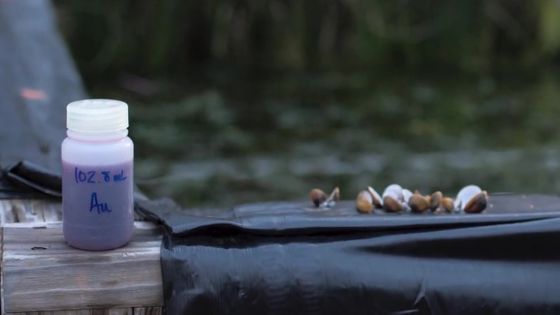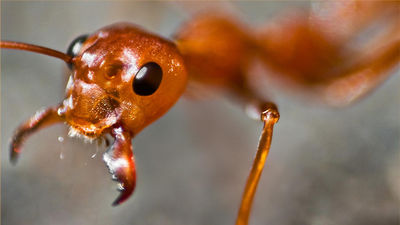New technologies will be announced that will allow pesticides and nutrients to be incorporated almost 100% into crops

by
As of 2019, it has been found that more than 95% of fertilizers and pesticides used in the air and applied from roots are wasted without being taken into crops. Pesticide remaining in the soil and flowing into the ground water is not only wasteful, but also adversely affects the soil and surrounding environment, making sustainable agriculture difficult. Under these circumstances, research results were announced that new technologies utilizing nanotechnology will make it possible to incorporate pesticides and nutrients into almost 100% crops.
Nanoparticle Size and Coating Chemistry Control Foliar Uptake Pathways, Translocation, and Leaf-to-Rhizosphere Transport in Wheat | ACS Nano
https://pubs.acs.org/doi/10.1021/acsnano.8b09781
A new route for plant nutrient delivery-College of Engineering at Carnegie Mellon University
https://engineering.cmu.edu/news-events/news/201/06/12-lowry-acs-nano.html
Scientists Discover A New Way To Provide Plants The Nutrients They Need To Thrive | TechCrunch
https://techcrunch.com/2019/06/24/scientists-discover-a-new-way-to-provide-plants-the-nutrients-they-need-to-thrive/
It is the research group of Professor Greg Lowley who teaches civil engineering and environmental engineering at Carnegie Mellon University that has developed a new technology that brings pesticides into plants with high efficiency. The research group first conducted an experiment to apply gold particles of 50 nm or less in diameter coated with polyvinyl pyrrolidone (PVP), which is a water-soluble polymer, to the surface of wheat. The reason for using gold is that it is a stable substance and is not metabolized by plants, so tracking is easy.

As a result of spraying gold particles on wheat, it was confirmed that the gold entered from the surface of the leaf and was spread throughout the plant body through the
It looks like this moves the nanoparticles sprayed on the leaves in more detail. The sprayed nanoparticles first adhere to the surface of the leaf.

Next, the nanoparticles slip through the

The nanoparticles also cross the epidermis for the plant to retain water and exchange gas ...

It reaches the mesophyll that is the inside of the leaf .

Then, it flows into

In addition, some of them move through the

It also spreads to the soil around the roots. This allows plants to continuously take up nanoparticulated nutrients and pesticides from their roots.

According to this method, nanoparticles attached to the surface of plants are almost 100% incorporated into plants. For this reason, various utilization methods are assumed. For example, zinc oxide nanoparticles can be released into the soil through plants to improve the nutritional status of crops and soil at once. In addition, when pathogenic bacteria get into the plant, it is impossible to remove bacteria in principle, but it is possible to treat bacterial diseases by carrying antibiotics with nanoparticles. It is expected.

by wuzefe
Furthermore, since nanoparticles can be processed to have various properties depending on the material and coating method used for coating the surface, nanoparticles that remain on the leaves even if it rains, light, etc. It is also possible to coat in order to be effective in response to
Lowry says that 'it will bring about a paradigm shift in agricultural technology' about the transportation technology of materials by nanoparticles, and the prospect that the practical application of this technology will dramatically improve the production efficiency of agricultural products. Said.
Related Posts:
in Science, Posted by log1l_ks







